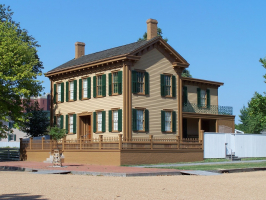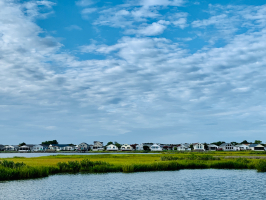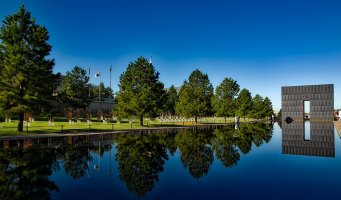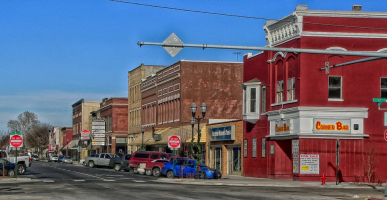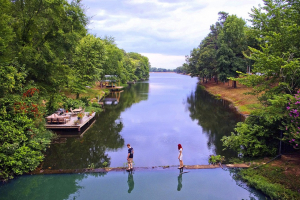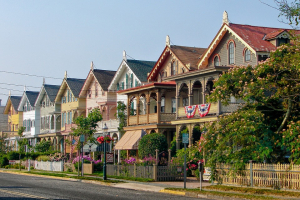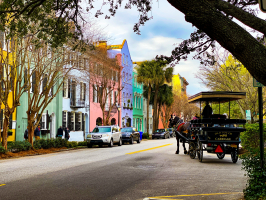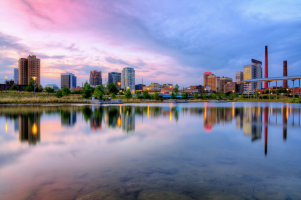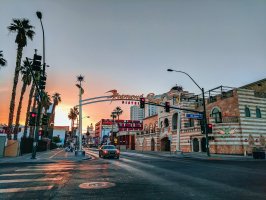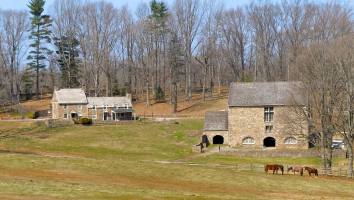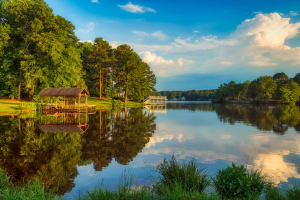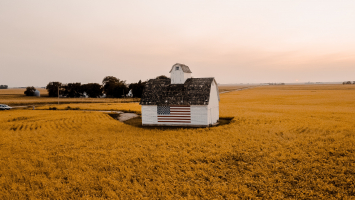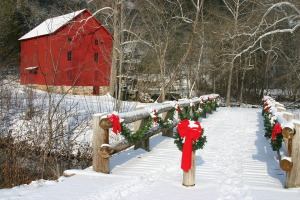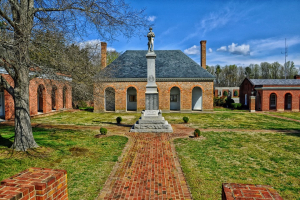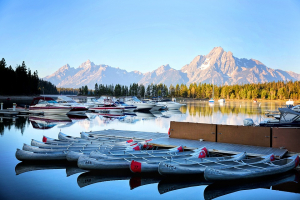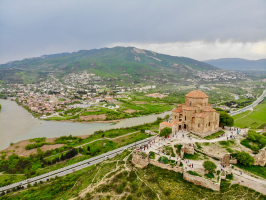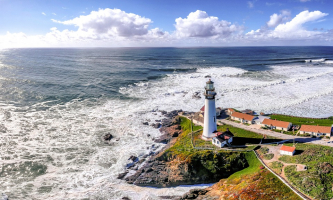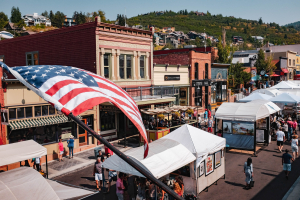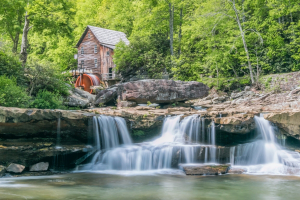Top 12 Best Small Towns in Alaska
Many people have an Alaska trip on their bucket list. Every year, millions of visitors come to this remote state to see the magnificent mountain peaks, ... read more...abundant wildlife, and isolated beauty. While Alaska itself is a popular vacation destination, small towns in Alaska are not. Here is a list of the top small towns in Alaska that you should visit on your next trip.
-
Skagway is a popular tourist destination on Alaska's coast. Skagway is located in the stunning Alaska Panhandle and is well-known for being a popular cruise ship destination as well as playing an important role in the 125-year-old Klondike Gold Rush. Skagway was a setting for the well-known Jack London novel The Call of the Wild, which has been adapted for film several times. Skagway attractions include the White Pass and Yukon Route narrow gauge railroads (built in a hurry to serve the gold rush), the Klondike Gold Rush National Historical Parks, the White Pass and Chilkoot Trails, historic gold rush era buildings, and much more.
Skagway has a population of about 1,000 people, which more than doubles during the summer tourist season. It receives approximately 1 million visitors per year due to its tourist infrastructure, glaciers, mountains, historic train to the Yukon Territory, gold rush heritage, and location as a convenient stopover for coastal Alaskan cruises (more than the whole state of Alaska). People come from all over to see why Skagway is regarded as one of Alaska's most beautiful towns. On a busy day, over 400 cruise ships visit, and the ships can bring in ten times the town's resident population (a modern continuation of its rush of the past).
Over 20 historic buildings have been preserved, including The Moore House, The Mascot Saloon, and Jeff Smith's Parlor. The Mascot Saloon was one of more than 70 saloons in town during its heyday as "the roughest place in the world". It is now run by the National Park Service and serves as a museum about the town's history of gambling, drinking, and prostitution. Take the time to go hiking and backpacking outside of town if you have the time. There are excellent hiking trails, including the three- to four-day Chilkoot Trail. The Laughton Glacier, an impressive hanging glacier reached by railroad and an easy 2.5-mile hike, is one of the impressive glaciers to see. Visit the Gold Rush Cemetery, which is about a 1.5-mile walk from downtown Skagway. People come here to visit the graves of Soapy Smith and Frank Reid, two villainous con men who died in a Wild West-style shootout.
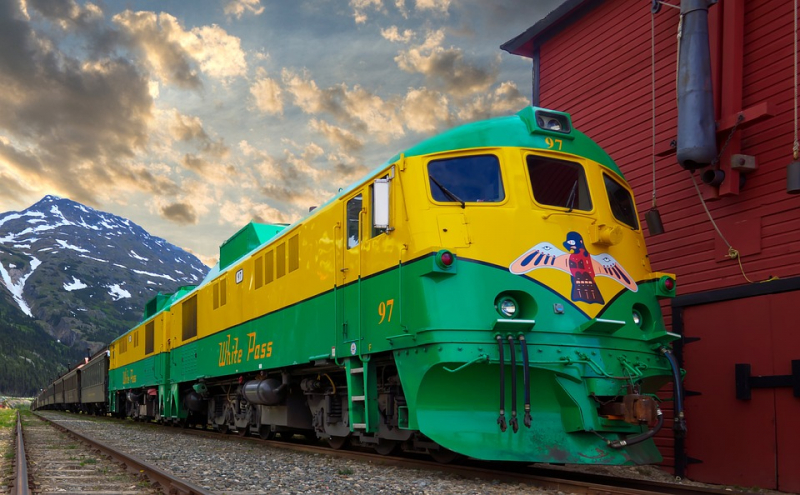
Photo by MICHOFF on Pixabay 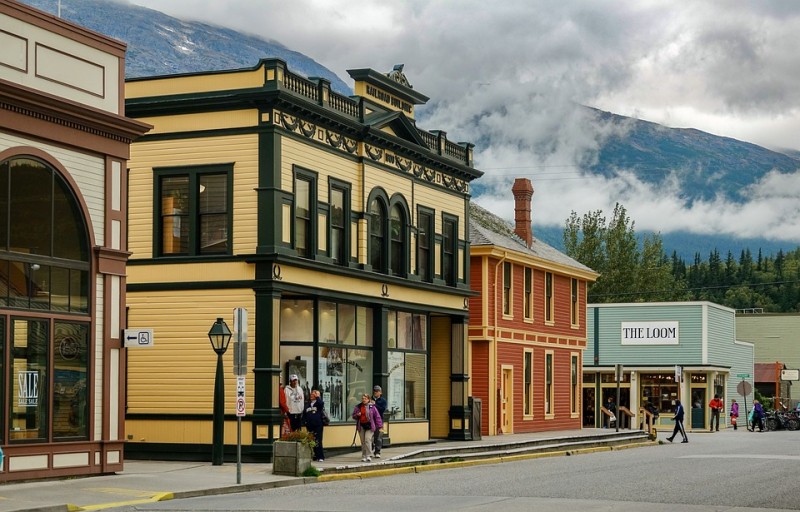
Photo by Patjosse on Pixabay -
The tiny, quirky hamlet of Talkeetna is a perfect representation of life in small-town Alaska for many visitors. It's a must-see stop in Southcentral Alaska, located 115 miles north of Anchorage in the Mat-Su Valley. Talkeetna is said to be the inspiration for the fictional community of Cicely in the popular TV show "Northern Exposure", so it's no surprise that it resonates with visitors. Its artistic, outdoorsy, and creative residents are proud of their community's character and mountaineering history as the starting point for climbers attempting to summit North America's tallest peak, Denali. Talkeetna, a gold-mining town at the turn of the twentieth century, has retained much of its early Alaska flavor. The streets are lined with log cabins, a roadhouse, and clapboard storefronts.
A visit to Talkeetna would be incomplete without a stroll down Main Street, which features two blocks of historic structures, shops, art galleries, restaurants, and a brewery. Nagley's Store, which is red and white, was built in 1921 and is on the National Register of Historic Places. Other historic structures include the Fairview Inn, which was built in 1923, and the Talkeetna Roadhouse, which was built in 1917. On clear days, Talkeetna Riverfront Park at the end of Main Street offers views of the Susitna River and Denali. After a day of exploring, nothing beats grabbing a drink at the brewery and sitting out on the deck, watching the hustle and bustle of Main Street under the midnight sun.
The Walter Harper Talkeetna Ranger Station in Denali National Park and Preserve provides visitors with a taste of the high adventure of climbing Denali. During the summer, the National Park Service office processes the numerous expeditions to Denali and has a small display and video program for those considering climbing the peak. The Talkeetna Historical Society Museum, a small complex consisting of four restored buildings, preserves the history of Denali and the climbers who made the first ascents. The Section House, which contains a relief model of Denali and its climbing routes surrounded by Bradford Washburn's famous photos of the mountain, is by far the most fascinating structure. A visit to Talkeetna Cemetery near the airport will give anyone a better understanding of how dangerous climbing North America's highest peak is. Don Sheldon, the famous bush pilot who rescued many climbers from the mountain, has the most prominent grave in it. A memorial to all climbers who died on the mountain and neighboring peaks is also located here.
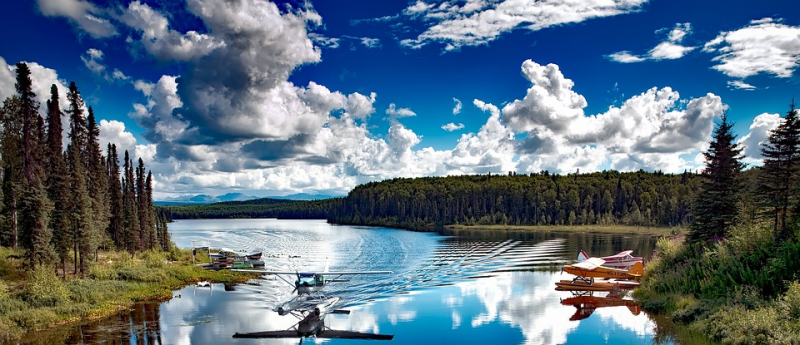
Photo by 12019 on Pixabay 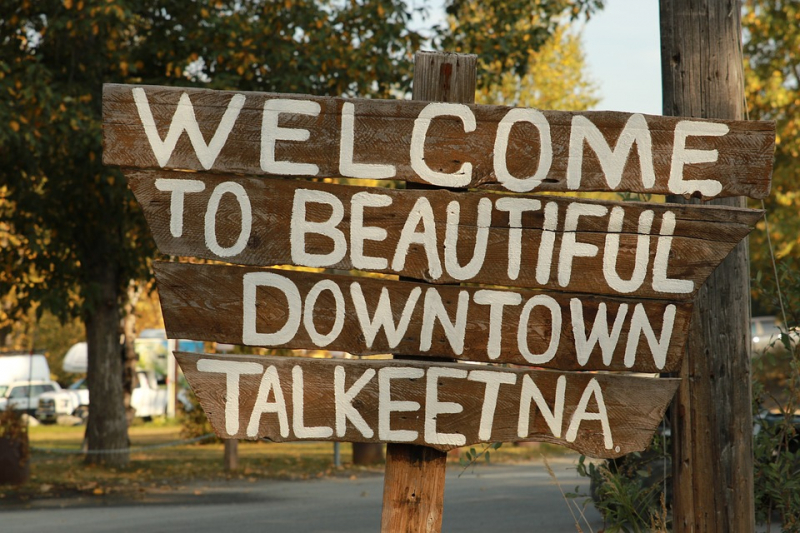
Photo by OrnaW on Pixabay -
Girdwood prides itself on being Alaska's only true resort town. Girdwood, located 45 minutes south of Anchorage, is home to the luxurious Alyeska Resort, fun and entertaining festivals, and a plethora of year-round outdoor adventure opportunities in beautiful mountain surroundings. Girdwood, formerly known as Glacier City, began as a supply camp for gold miners around the turn of the century. The town relocated 2.5 miles up the valley to its current location after the 1964 Good Friday Earthquake dropped the coast along nearby Turnagain Arm by 10 feet. Girdwood is now a full-service community of about 2,000 people, attracting skiers in the winter, hikers in the summer, and artists all year. Alaskans and visitors alike are drawn to the state's fine restaurants, diverse lodging options, and local flavor.
Riding the tram at Alyeska Resort to the top of Mount Alyeska is one of Girdwood's most iconic experiences. The scenic ride on the 60-passenger tram takes you to the 2,300-foot level, where a bar, deli, fine dining restaurant, and museum overlook dramatic views of Turnagain Arm and seven glaciers nestled in the surrounding peaks. Skiers and snowboarders use the tram to access ski terrain in the winter. Hikers can explore the mountain above the tram in the summer and then hike down the North Face Trail or take the tram back down the mountain. Local outfitters also lead paragliding trips down the mountain for an adrenaline rush.
Girdwood is an outdoor recreation haven, with a plethora of hiking and biking trails that explore the area's temperate rainforest and stunning mountains. The popular Winner Creek Trail begins near Alyeska Resort and leads 3 miles through lush forest to the scenic Winner Creek Gorge. The Crow Pass Trail is the most impressive hike in the area, a stunning alpine hike that includes gold-mining relics, a waterfall, an alpine lake, a glacier, and occasionally Dall sheep and black bears on the slopes above. The truly daring can hike the entire Crow Pass Trail, which stretches 23 miles from Girdwood to Eagle River and is a popular route for overnight backpacking trips.
Mountain bikers have access to the same downhill terrain that skiers do on Mount Alyeska in the winter. There is a vast network of downhill mountain bike trails accessible via chair lift. In the summer, beginner to advanced singletrack trails meander through the forested hills of the town's Nordic ski loop. If road biking is more your style, you can cruise along the Bird to Gird Trail, a paved multi-use trail that runs 12 miles from Girdwood to the small community of Bird. Several outfitters rent mountain bikes and fat bikes all year.
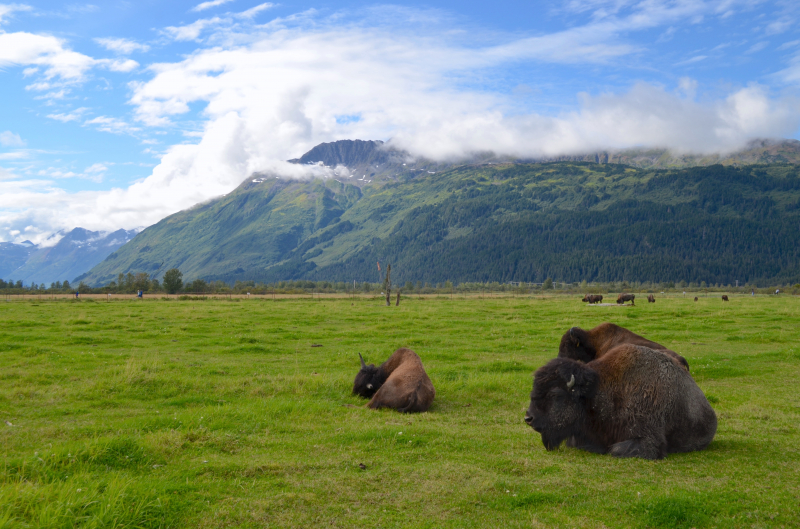
Photo by Ty Fiero on Unsplash 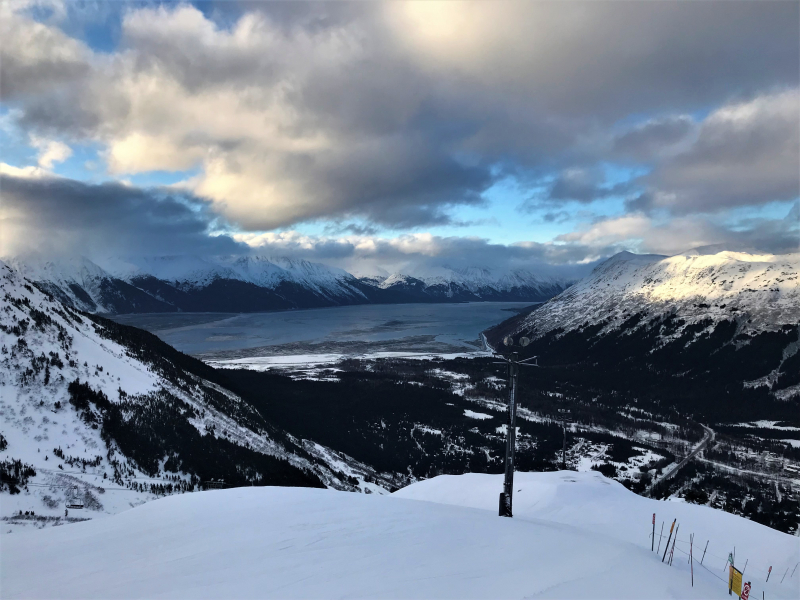
Photo by Bruce Warrington on Unsplash -
Due to its location at the southern tip of the Inside Passage, Ketchikan is known as Alaska's "first city"—it is the first city you reach as you cruise north, and for many visitors, it is their first introduction to the beauty and majesty of Alaska. Ketchikan is located approximately 90 miles north of Prince Rupert, British Columbia, and hugs the bluffs that form the shoreline along the southwest corner of Revillagigedo Island. Ketchikan is centered on Tongass Avenue, which is 31 miles long but never more than 10 blocks wide. Many businesses and homes are built on stilts out over the water on one side of the avenue, while on the other side they cling to the steep slopes and often have winding wooden staircases leading to their doors.
The downtown area contains two large harbors, several cruise ship docks, and many of Ketchikan's main attractions, including historic Creek Street, a picturesque boardwalk path built on stilts over Ketchikan Creek. Until 1954, Creek Street was Ketchikan's infamous red-light district. Today, the street is a photographer's dream, with art galleries, gift shops, bookstores, and restaurants. Dolly's House, the parlor of the city's most famous madam, Dolly Arthur, was the most popular house on Creek Street in the 1930s. Today, it's a museum dedicated to this notorious era. Inside you’re guided through the brothel, hear about Dolly’s intriguing life in Alaska, and see, among other things, its bar, which was placed over a trapdoor to the creek for quick disposal of bootleg whiskey.
The Ketchikan Road system extends both north and south of the city, connecting to additional parks, attractions, and lodging. RVers frequently leave the Alaska Marine Highway and travel north to a few campgrounds, including Settlers Cove State Recreation Site, which is located at the end of the road, 18 miles north of Ketchikan. The 38-acre state recreation area includes 14 campsites nestled among lush rainforest and overlooking a scenic coastal area, as well as a quarter-mile trail leading to a waterfall and observation deck. South Tongass Avenue leads to totems and hiking trails to the south. Side trips to Prince of Wales Island, Annette Island, numerous bear-viewing sites, and one of the area's most impressive attractions: Misty Fjords National Monument depart from Ketchikan. This 3,570-square-mile wilderness is a natural mosaic of sea cliffs, steep fjords, and 3,000-foot-high rock walls jutting straight out of the ocean. Trips into the monument, whether by tour boat, small airplane, or kayak, provide wildlife-sighting opportunities for seals, otters, bald eagles, and whales.
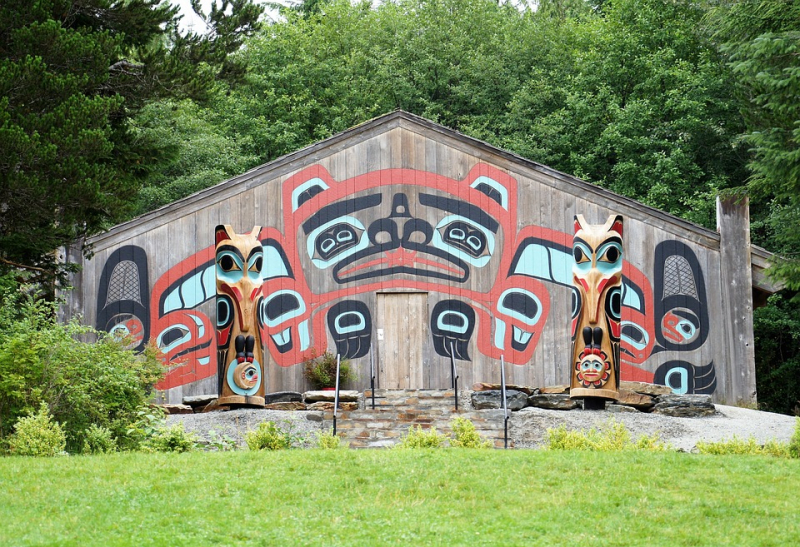
Photo by rdshanky on Pixabay 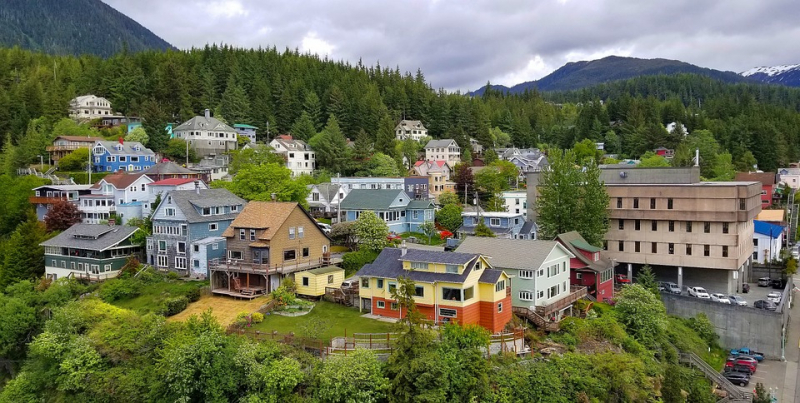
Photo by DNLMusicpublishers on Pixabay -
Valdez, a city of about 3,900 people in a remarkably picturesque setting, is deep in the heart of Prince William Sound and surrounded by some of the world's tallest coastal mountains. Valdez is best known as the southern terminus of the Trans-Alaska Oil Pipeline, but it is also a popular tourist destination. Valdez is situated on a spit of flat land on the north shore of Port Valdez, a deep-water fjord, and is 305 miles east of Anchorage and 364 miles south of Fairbanks.
Valdez, like many other Alaskan coastal towns, has its heart in its small boat harbor clustered along its waterfront. From there, the town stretches a dozen walkable blocks back toward the mountains and Mineral Creek Canyon, while nearby Egan Drive, Valdez's Main Street, becomes the Richardson Highway and heads north for Thompson Pass. A variety of restaurants, hotels, and museums can be found throughout the downtown area. The Trans-Alaska Oil Pipeline Terminal, visible across the inlet from town, has massive storage tanks holding nine million barrels of oil each. The impressive Maxine and Jesse Whitney Museum, which is dedicated to Alaska Native culture and wildlife, is the centerpiece of Prince William Sound Community College. Displays include ivory and baleen artwork, moose antler furniture, and natural history displays.
Hiking opportunities abound in Valdez, ranging from paved multi-use trails that lead from downtown to more difficult trails that explore the area's waterfalls, alpine vistas, and mining history. Mineral Creek Trail leads to mining ruins in the mountains just a few blocks from downtown, and Shoup Bay Trail skirts Port Valdez to provide views of glaciers. The Crooked Creek Information Site, located on the Richardson Highway near the Valdez airport, is staffed by US Forest Service naturalists who provide information on outdoor activities and fishing. In July and August, a short walk will take you to the fish viewing platform, where you can watch chum and pink salmon spawn.
Columbia Glacier is North America's second-largest tidewater glacier, spilling forth from the Chugach Mountains and terminating with a 300-foot high face. Several tour companies provide day cruises into Prince William Sound to Columbia Glacier or Meares Glacier, where large chunks of ice calve off and crash into the water. You'll see humpback whales, orcas, Dall's porpoises, harbor seals, sea lions, sea otters, and puffins along the way. Valdez is a kayaker's paradise due to the area's calm inlets and fjords. Outfitters in town rent kayaks, drop off water taxis, and lead guided trips ranging from a day to a week that include spectacular sights like Columbia Glacier.
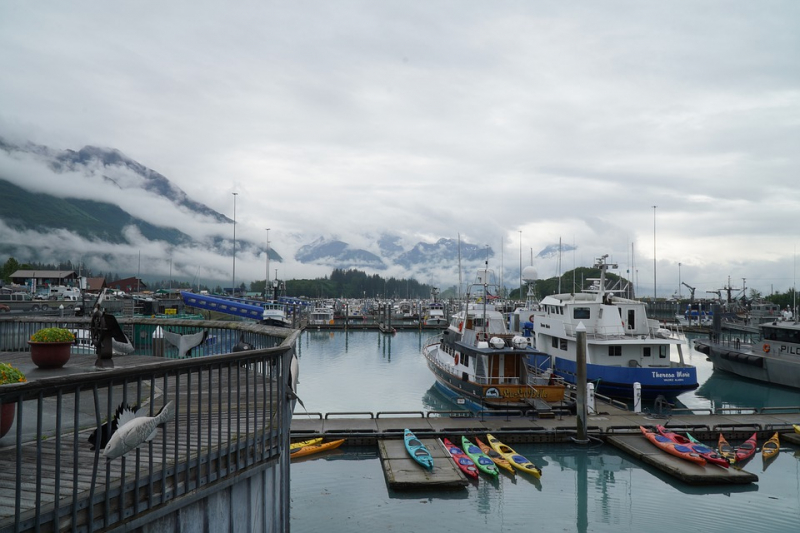
Photo by iWHY on Pixabay 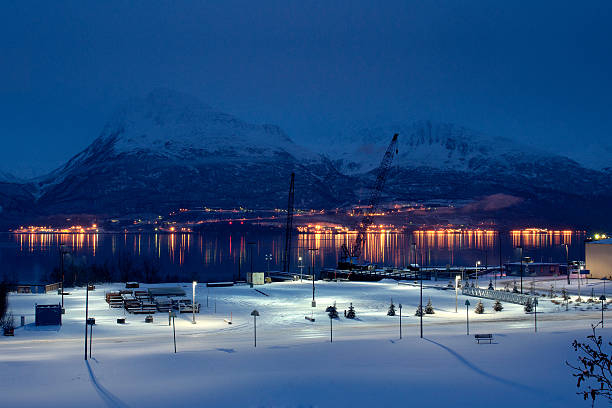
Photo by iWHY on Pixabay -
Alaska's state capital is also one of the state's most beautiful cities and one of its most visited communities. With so much to see and do in Juneau, there's bound to be something for everyone. Downtown Juneau is a maze of narrow streets running past a mix of new structures, old storefronts, and quaint houses featuring early 19th-century architecture from the town's gold-mining days, nestled between Mount Juneau, Mount Roberts, and the Gastineau Channel. Cruise ships, fishing boats, and floatplanes zip in and out of the harbor. Juneau is the only state capital in the United States that can only be reached by plane or boat, as there is no road access.
Juneau's vibrant downtown is compact, easy to navigate on foot, and a popular destination for visitors. Many of Juneau's main attractions, including the State Capitol Building, Saint Nicholas Russian Orthodox Church, several museums, and historic South Franklin Street, are within easy walking distance of the cruise ship docks. The Juneau Convention & Visitors Bureau is also nearby, with visitor information, displays, and walking tour maps of the city. Historic South Franklin Street is a refurbished historical district just a block from the waterfront, with many buildings dating from the early 1900s that have since been converted into bars, gift shops, and restaurants.
A delightful Marine Park is nearby, with spotting scopes for visitors to look for mountain goats on Mount Juneau. Tahku, a life-size bronze humpback whale statue that appears to be leaping from an infinity pool near the Juneau-Douglass Bridge, is also not to be missed. Visitors can soar to new heights on the Mount Roberts Tramway, which departs from South Franklin Street. Gondolas transport visitors above the city, where they can enjoy spectacular scenery, Alaska Native culture and art, and even shopping and dining. Most importantly, the tramway provides easy access to spectacular views and excellent hiking above the tree line. Built in 1893 against the backdrop of Mount Juneau, the onion-domed Saint Nicholas Russian Orthodox Church is the oldest original and continuously-used church in the Inside Passage. The church houses a small gift shop filled with nesting dolls and other handcrafted items from Russia.
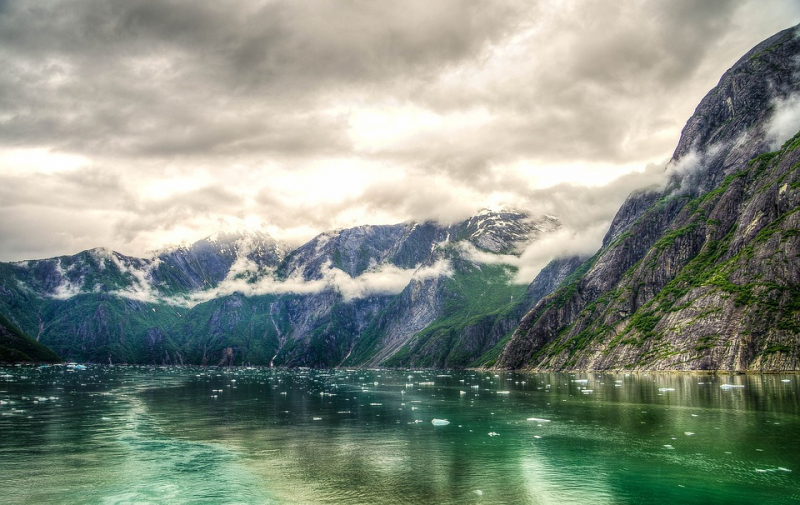
Photo by Michelle_Maria on Pixabay 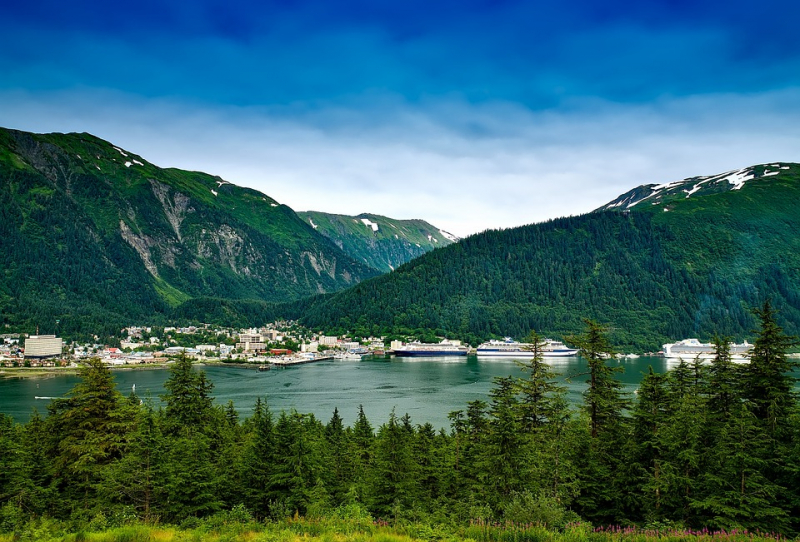
Photo by 12019 on Pixabay -
Sitka is the only Inside Passage community that faces the Pacific Ocean, hugging the west coast of Baranof Island in the shadow of Mount Edgecumbe. The city of about 8,500 people, located on Sitka Sound, is known for its Tlingit culture and picturesque remnants of its Russian heritage, such as the onion-shaped domes and gold-colored crosses of the beloved Saint Michael's Russian Orthodox Cathedral. The city and borough boundaries include the majority of Baranof Island, where Sitka is located, as well as south Chichagof Island and many other small, forested islands along the coast.
Downtown Sitka is home to a number of art galleries, a fine bookstore, gift shops, several lodging options, and restaurants with spectacular views and fresh local seafood, all nestled between the mountains and the sea. The Sitka Music Festival is a major summer event in the city. Pick up a map at the Sitka Visitor Information Center and set out on a walking tour of the city's history and culture. There are 22 historic buildings on the National Register of Historic Places in Sitka, including the Russian Blockhouse, Russian Bishop's House, Princess Maksoutoff's Grave, and Baranof Castle State Historic Site, to name a few.
The Russian Bishop's House is Sitka's oldest intact Russian building, built in 1842 by the Russian American Company as a residence for the Orthodox Church's Bishop. Its first resident was Bishop Innocent (Ivan Veniaminov). The house has been restored to its historic period of the 1850s, when it served as a school, bishop's residence, and a chapel. The house has been designated a National Historic Landmark. From 1804 to 1867, the hill was occupied by a succession of Russian buildings, and on this site, the Russians officially handed over Alaska to the United States on October 18, 1867. Alaska State Parks manages this historical site, which is on the National Register of Historic Places.
Sitka has dozens of trails that start in the lush rainforest that surrounds the city and often end high in the mountains. Many of these trails are located in the Tongass National Forest, the country's largest national forest. Trails for all skill levels explore the forest, coves, lakes, and alpine areas of the area. The Tongass National Forest Sitka Ranger District Office can provide hiking trail information and maps. Fly-fishing for salmon, char, trout, and steelhead in Sitka's lakes and rivers. Ocean fishing charters provide world-class halibut and salmon fishing. Sitka is home to several fishing lodges that offer multi-day fishing trips with comfortable lodging and meals.
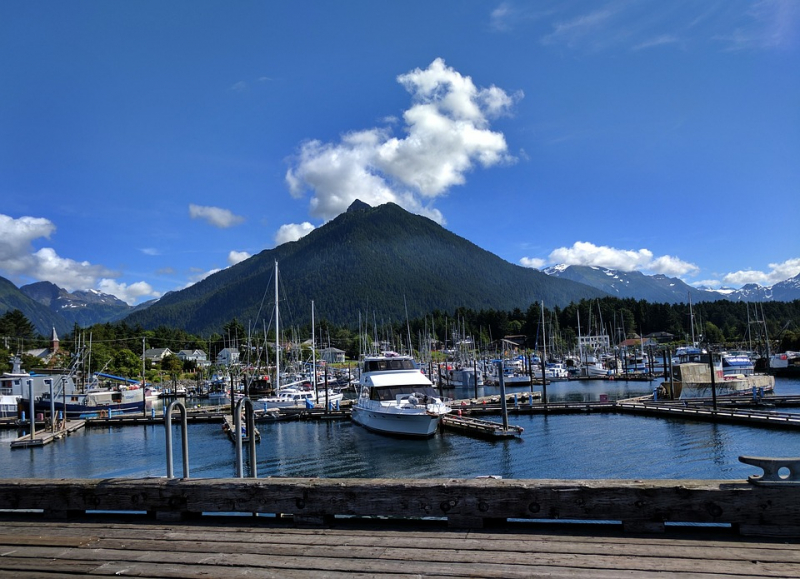
Photo by dawnshuler on Pixabay 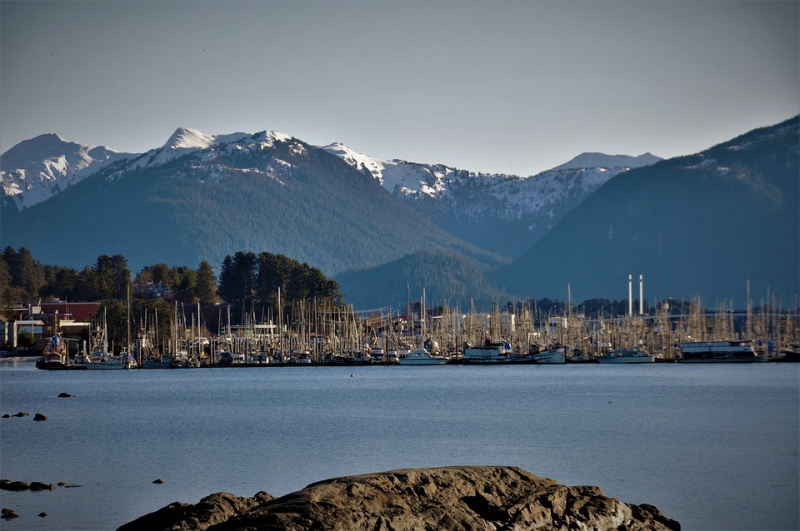
Photo by dawnshuler on Pixabay -
Petersburg is located across Frederick Sound from a spectacular glaciated wall of alpine peaks, including the distinctive Devil's Thumb, that form a jagged snowcapped skyline. This 3,000-person community is centered on its busy and scenic waterfront, which is lined with wharfs, working boats, and weathered boathouses, while tidy homes and businesses line the quiet streets, many of which are decorated with distinctive flowery Norwegian rosemaling.
Sing Lee Alley, a picturesque street built on pilings over Hammer Slough, is the heart and soul of old Petersburg. The Sons of Norway Hall, a large white and red structure with colorful rosemaling, was constructed in 1912 and is a National Historic Site. The social hall is still the heart of Petersburg's Norwegian culture. During the summer, visitors can enjoy Norwegian pastries and watch Norwegian dancers. Photographers who want to capture Petersburg's colorful waterfront will enjoy Hammer Slough and Sing Lee Alley. Sing Lee Alley is home to the Bojer Wikan Fishermen's Memorial Park. The memorial, which is built on pilings over Hammer Slough, features a nine-foot bronze sculpture of local fisherman Bojer Wikan and honors all of his fellow crewmembers who died at sea. The Valhalla, a replica of a Viking ship built in 1976 and purchased by Petersburg two years later, is also on display.
LeConte Glacier is Alaska's southernmost tidewater glacier and is only 20 miles from Petersburg by boat. Icebergs that have called off LeConte can often be seen from the Petersburg shoreline floating into Frederick Sound. Flightseeing, kayaking, and day-long charter boat cruises, some of which include whale watching in Frederick Sound, are some of the ways to experience the glacier from Petersburg. Eagle's Roost Park, a small park with a picnic table and benches, is a short walk from downtown Petersburg. The Narrows Viewing Platform, an excellent place to view eagles roosting in trees or feeding in Wrangell Narrows, is its most popular attraction. You can also follow a trail down to the beach to explore tide pools at low tide.
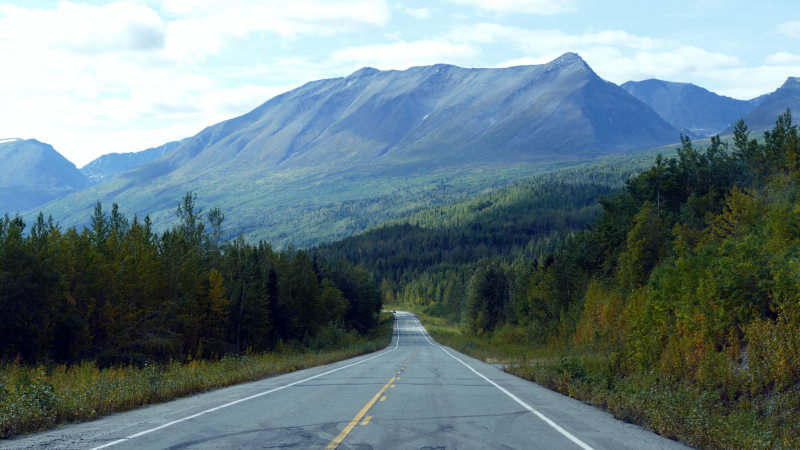
Photo by Joris Beugels on Unsplash 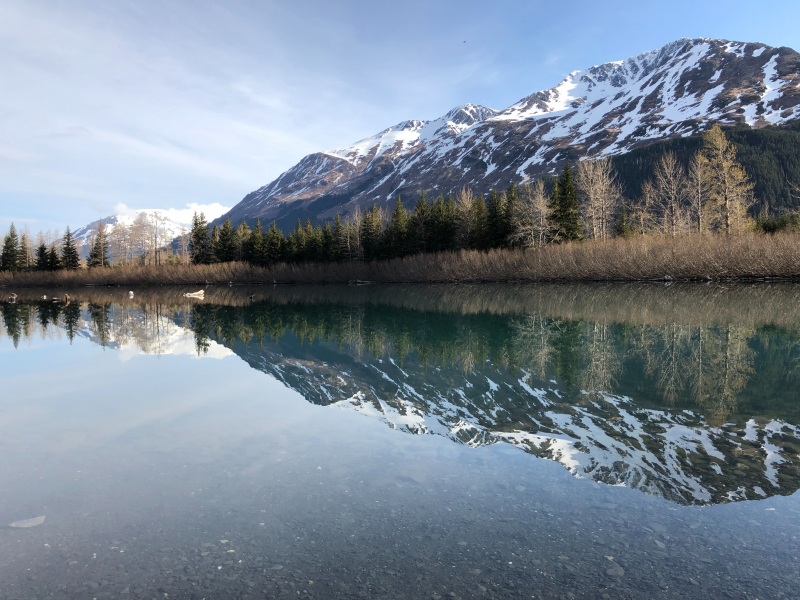
Photo by André Schnitzler on Unsplash -
Homer is known as the "Halibut Fishing Capital of Alaska", but non-anglers enjoy this charming, off-the-beaten-path Alaska town. Homer's lifeblood is an eclectic mix of artists, fishermen, and outdoor enthusiasts drawn by its slow pace and postcard setting by the clear-water bay. You'll have to go out of your way to get here, and plan to stay for at least a couple of days—this is one of Alaska's best small towns.
Homer is one of the best places on the planet for humans to interact positively and joyfully with their surroundings on many levels. Hiking the pristine and wildlife-rich trails and beaches, sailing, kayaking, bear viewing, clamming, fishing her sparkling bay, or photographing her eagles and other birds up close, Homer is Alaska's Ecological Tourism Capital. And Homer fans take great pride in keeping their beautiful land and waters clean and healthy, with some organizations scheduling trail and water cleanings on a regular basis.
Homer provides a variety of fun and memorable experiences, whether you're fishing or relaxing on the Homer Spit, a long, narrow finger of land jutting into the bay; browsing the art on "Gallery Row", on Pioneer Avenue; or hiking trails above town for views of wildflower meadows, glaciers, and peaks. If you have the time, make a point of visiting some of Kachemak Bay's hidden treasures. Seldovia is a charming seaside town with historic boardwalks and breathtaking views that can be reached via a 45-minute ferry ride. A meal at The Saltry in Halibut Cove is a must. Alternatively, spend a few nights in a remote wilderness lodge and completely unplug.
It's about a 3.5 - 4 hour drive from Seward and a 4.5 hour drive from Anchorage; for more information, see our Anchorage to Homer article. During the summer, if you don't want to drive, a bus is available. A ferry can also take you to Homer along the Alaska Marine Highway. Alternatively, you can save time by flying there in 45 minutes from Anchorage with regional airline Ravn Alaska.
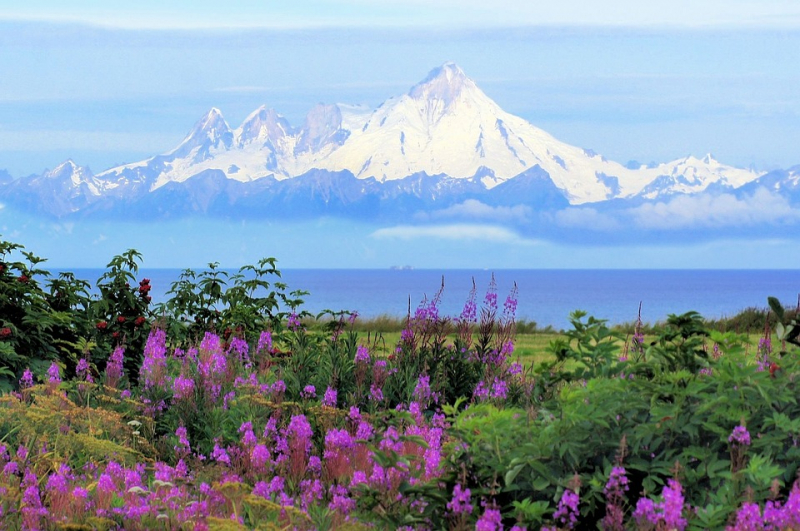
Photo by BarbaraJackson on Pixabay 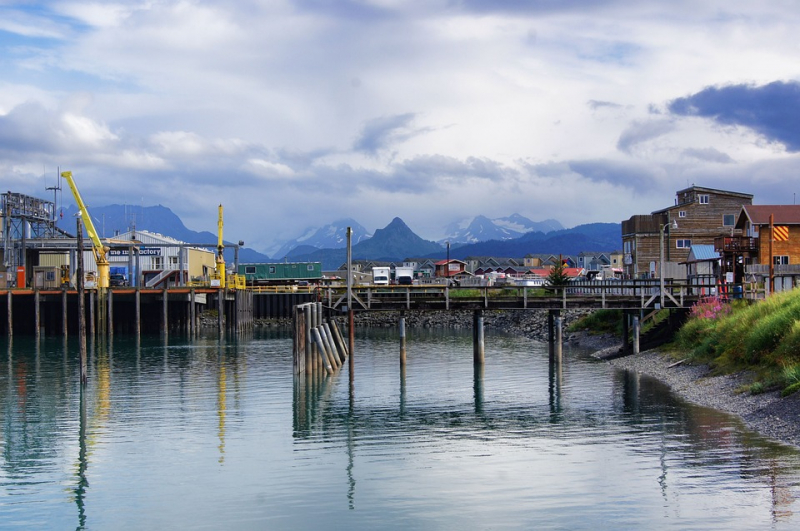
Photo by BarbaraJackson on Pixabay -
Wrangell is located on Wrangell Island's northwest tip, 155 miles south of Juneau and 89 miles northwest of Ketchikan. The picturesque Inside Passage harbor town - not to be confused with Wrangell-St. Elias National Park in Southcentral Alaska - is known for its Tlingit culture, wildlife viewing, and river exploration on the beautiful Stikine River. Tlingit people have lived in the area for thousands of years, and examples of their culture and history can be found throughout Wrangell. The town has an impressive collection of totems, with over a dozen scattered throughout town, making for a pleasant walk. The killer whale totem that adorns Chief Shakes Grave is one of the most popular totems.
Chief Shakes Island, a grassy islet in the middle of the boat harbor reached by a pedestrian bridge, is one of the most enchanting spots and also home to the best collection of totems. In comparison to the hum of the fishing fleet that surrounds it, the tiny island with its totems, tall cottonwoods, and eagles usually perched in the branches is a quiet oasis. Shakes Community House, in the center, is an excellent example of a Tlingit tribal house, containing tools, blankets, and other cultural items. The six totems that surround the tribal house are equally impressive, all replicas of originals carved in the late 1930s.
One of Southeast Alaska's largest pink salmon runs enters Anan Bay and heads up Anan Creek, which is located 30 miles southeast of Wrangell on the mainland. You can safely observe eagles, harbor seals, black bears, and brown bears feasting on spawning humpies from an observatory and photography platform at Anan Wildlife Observatory. This is one of the few places in Alaska where black and brown bears coexist - or at the very least tolerate each other. Anan Creek is a 20-minute floatplane flight or an hour boat ride from Wrangell, and many tour companies offer full-day tours to the observatory. The more daring will book a trip to the United States.
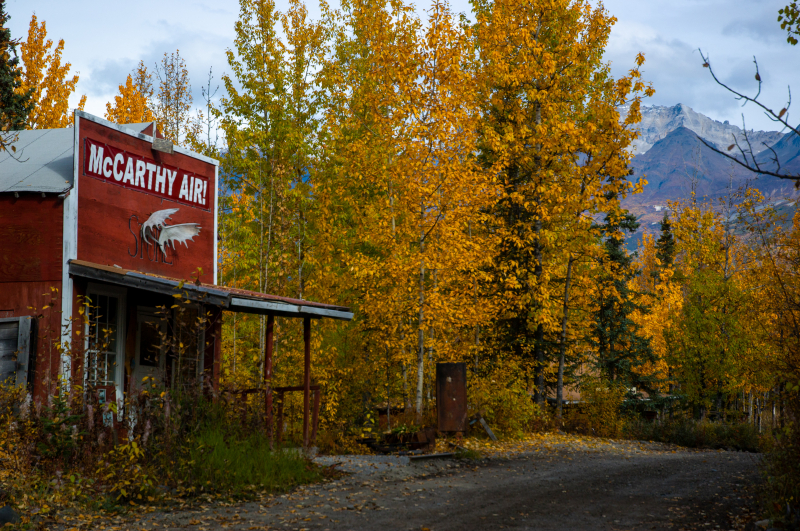
Photo by Patrick Federi on Unsplash 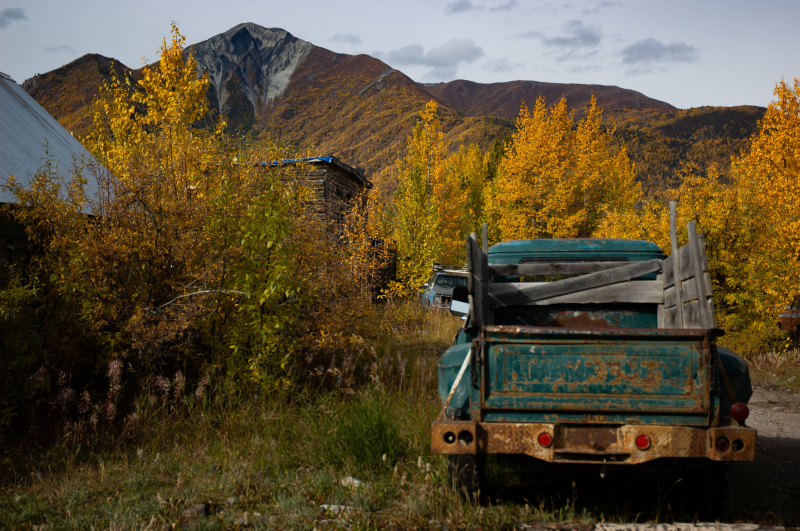
Photo by Patrick Federi on Unsplash -
Seward, 127 miles south of Anchorage, is a charming coastal town. It is one of Alaska's oldest and most beautiful towns. The Kenai Peninsula's progressive city of 2,700 people is set against a backdrop of abrupt mountain slopes cloaked in shaggy summer greens and snow. Seward's thriving economy is based on tourism, shipping, and fishing. Seward, known as the "Gateway to Kenai Fjords National Park", is home to a number of world-class boat tours that explore the National Park's stunning scenery and abundant wildlife. Because of its incredible natural wonders and the popularity of Seward as a cruise ship destination, the Kenai Fjords National Park is one of the most visited areas in all of Alaska. As the first or last port of call for many cruise passengers, it’s easy to add a day or two of activities in this beautiful town.
It's easy to see why a glacier and wildlife cruise is one of the most popular ways to spend a day in Seward. Sailing out on these majestic waters, teeming with marine wildlife and surrounded by dramatic mountains, is an exhilarating way to explore the area. Are you short on time? No problem: even a short cruise in Resurrection Bay is breathtaking. If you have more than a day, an overnight or multi-day cruise into Kenai Fjords National Park will allow you to truly appreciate the area's majesty. These are frequently private charters with just your group, and the adventures are tailored to you.
Exit Glacier, located just a 10-minute drive from Seward, is not only a stunning wall of blue ice, but also one of the state's most accessible roadside glaciers. It's a simple way to experience the thrill of seeing and hearing a glacier crackle. Choose from a couple of solo hikes to get up close and personal with the glacier. You can also go ice hiking or ice climbing with a guide and walk right out on the ice!
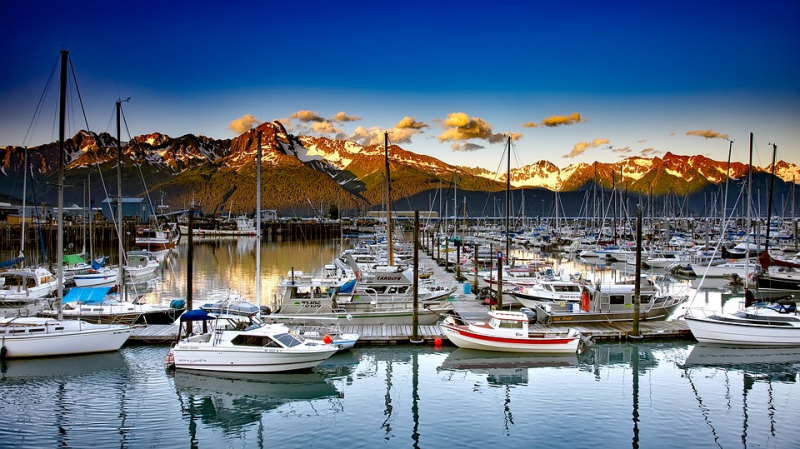
Photo by 12019 on Pixabay 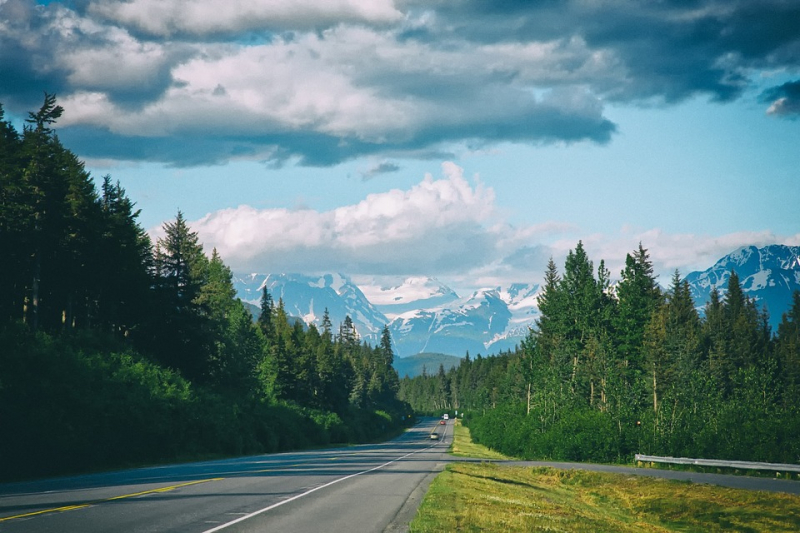
Photo by 12019 on Pixabay -
Kodiak is located on Kodiak Island, which is Alaska's largest island and the second-largest island in the United States, measuring 3,670 square miles and stretching more than 100 miles. Kodiak, also known as the Emerald Isle, is a popular destination for nature lovers due to its lush landscape and abundance of outdoor activities. Kodiak's pulse can be felt along the waterfront and in the boat harbors: Alaska Marine Highway ferries dock right downtown, and fishing boats dock in the nearby St. Paul Boat Harbor. More boats dock across the channel on Near Island at St. Herman Harbor, and an afternoon on the docks can lead to friendly encounters with fishermen and the opportunity to watch them unload their catch.
From the city, more than 100 miles of paved and gravel roads lead into the wilderness that surrounds Kodiak. Some of the roads are rough jeep tracks only four-wheel drive vehicles can handle, but many can be driven to isolated stretches of beach, great fishing spots, spectacular coastal scenery, and secluded campgrounds. The Kodiak National Wildlife Refuge is the island's most well-known park. The 2,812-square-mile refuge encompasses two-thirds of Kodiak Island and contains a diverse range of habitats, including rugged mountains and alpine meadows, as well as wetlands, spruce forest, and grassland. Although the refuge has excellent fishing, the most popular activity is bear viewing.
Kodiak National Wildlife Refuge is home to 3,500 bears, with males weighing more than 800 pounds but growing to over 1,500 pounds and standing more than 10 feet tall. Because there are no roads in the refuge, bear viewing is done as a day tour with an air charter or flightseeing operator. Plan a multi-day bear viewing excursion from one of the island's remote wilderness lodges, such as the Alaska Native-owned Kodiak Brown Bear Center & Lodge. The Kodiak National Wildlife Refuge Visitor Center is located in downtown Kodiak and features exhibits on the wildlife and ecosystems of the area. Kodiak, with its easy access to the ocean and numerous rivers and lakes, provides limitless opportunities for both saltwater and freshwater fishing. Join a full-day or half-day fishing charter and let the pros take you to the best halibut, salmon, rockfish, cod, and trout spots. Alternatively, book a multi-day itinerary from one of the area's many remote lodges, which will include lodging, meals, fishing, and other activities.
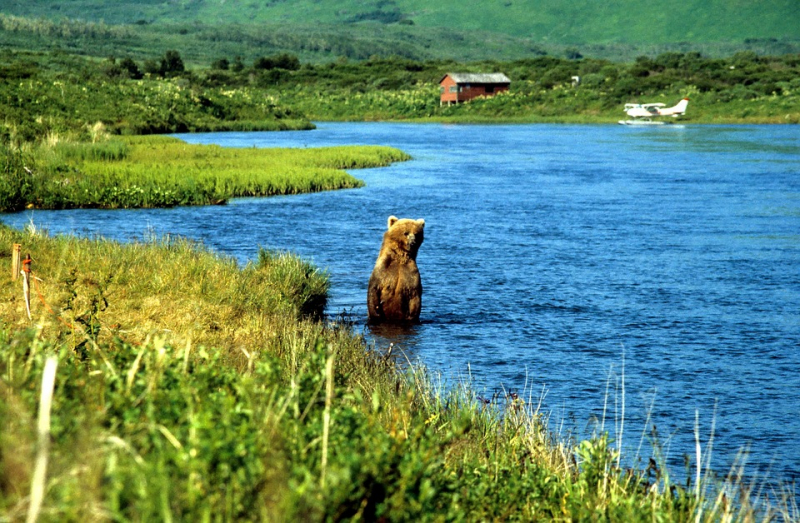
Photo by susscrofa on Pixabay 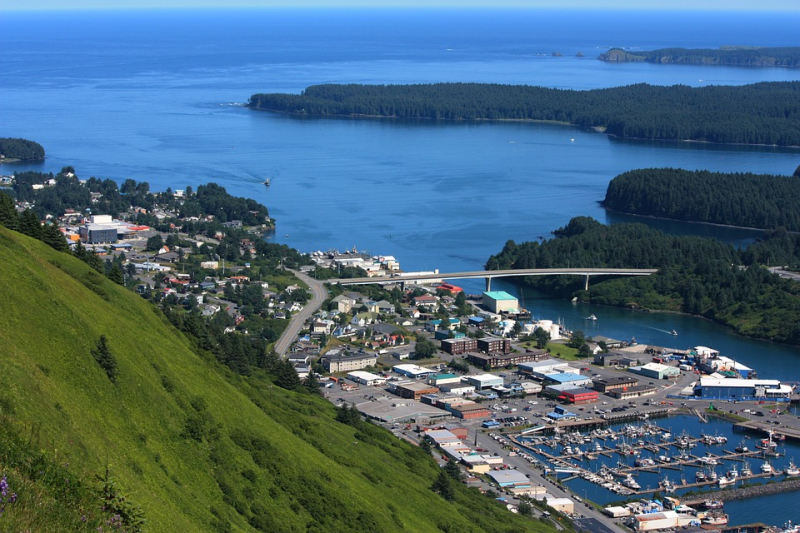
Photo by AlaskanPuffin on Pixabay














